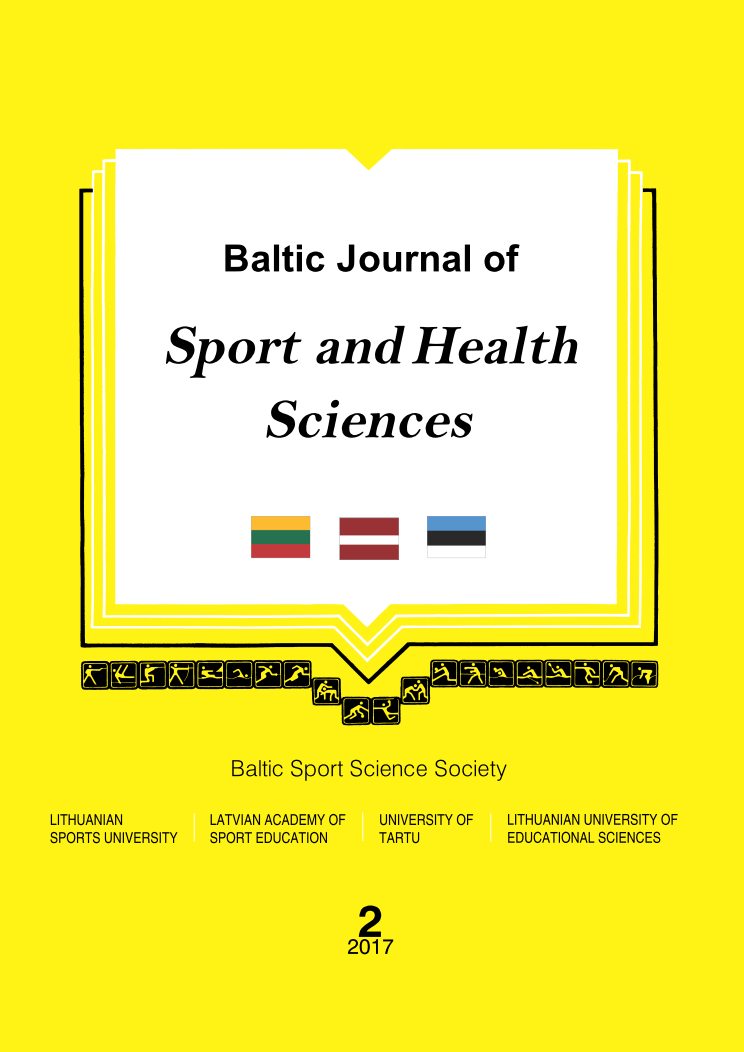Regularities of Youngster Free Time Physical Activity in a Latvian Secondary School
Abstract
Background. Article investigates youngster physical activity (PA) habits, finding tendencies of PA participation,
factors promoting and impeding it.
Methods. The methods include literature analysis, cross-sectional study with self-reported questionnaire
consisting of 11 questions and statements about most popular leisure sports, frequency, venues, significant others,
and neighbourhood influence. The questionnaire, based on EU Special Eurobarometer 412 “Sport and Physical
Activity”, research in Northern and Eastern countries, as well as in the Netherlands, was sent by e-mail to 91 Grade
10 subjects in a Latvian mainstream secondary school in the academic year of 2015/2016; the response rate was 60%.
The statistical analysis was carried out with Index method and SPSS software.
Results. The Cronbach’s alpha for neighbourhood section (5 items) of the questionnaire was .74. The validity of
the questionnaire was based on the consideration that the questions were drawn from surveys, described in reliable
sources. Most of the students with friends or alone did three sports at sport schools (69.50%), as well as in parks,
woods, seaside, at home, most popular sports were team games (basketball, volleyball), winter sports (skiing and
snowboarding), fitness sports (running), strength sports (gym workout) and gymnastics. Statistically significant,
medium strong correlations were found between good relations with neighbours and high level of well-being
(r = .38, p = .05).
Conclusion. The student choice to practice team games and gymnastics might be influenced by traditional
youngster values and their status as trendy sports, but winter sports in Latvia traditionally are among the most
popular ones. Good neighbourhood relations could help youngsters be more physically active.
Keywords: mainstream school students, leisure sports, neighbourhood social capital.
Downloads
Published
Issue
Section
License
Copyright (c) 2018 Baltic Journal of Sport and Health Sciences

This work is licensed under a Creative Commons Attribution 4.0 International License.






